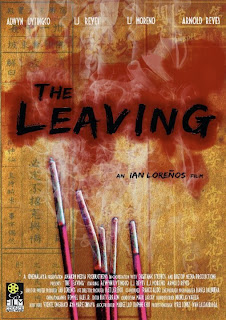
Director Joel Lamangan admitted that he was quite nervous with his first Cinemalaya film during the second day of the Sine Taktakan forum. He had apprehensions about how his film compare to those made by young filmmakers.
Sigwa is a film that Lamangan can be proud of although it is not what I was expecting from Lamangan and scriptwriter Bonifacio Ilagan, both activist victims of the harsh Marcos regime. It is not, and does not pretend to be, the definitive movie on the volatile seventies. It is more of a nostalgic search for the missing children of the Left movement. The film examines what happens to activists when they grow old.
The filmmakers took a risk in making a Fil-Am mother as main protagonist. Dolly (Dawn Zulueta/Megan Young) is a former journalist turned activist who was deported to the United States of America after her arrest in the 1970s. She came back to look for her daughter who she initially thought to be dead. The character is well wrought but she is too tame and American to represent the fiery generation of Filipino activists.
Dolly is no longer the firebrand she used to be. Two of her colleagues have mellowed down as well. On the extreme end is Oliver (Tirso Cruz III/Marvin Agustin), a student activist leader who has made a 180-degree turn to become a defender of the status quo. Instead of serving the people, he is propping up the administration of an unpopular president. Azon (Gina Alajar/Lovi Poe) was traumatized by a rape-torture incident and led a quiet life in the province raising a family. Only community organizer Rading and New People’s Army member Cita continue to be involved in the movement.
The film blends the star power and polished performances of a mainstream blockbuster with the relevant, edgy story of an indie film. It is not a smooth marriage because of the film’s difficulty in straddling the line between mainstream and indie filmmaking. Lamangan should have used hand-held camera tactics to capture in-your-face rally break-ups. The massive rally at the start is stagy and lacks gritty realism. It doesn’t help that it came after stirring footages of actual First Quarter Storm rallies were shown that set the screen ablaze. It will take nearly the entire movie before a scene of such power and courage is shown again.
The explosive ending is something that will never see light in a mainstream film. The convoy of Cabinet Secretary Oliver is intercepted by a group of rebels. An irate Oliver gets down from his car and meets face-to-face with his ex-lover and ex-comrade Cita (Zsa Zsa Padilla/Pauleen Luna). The scene cuts to a medium shot of the beautiful, smirking amazon fighter and then, the screen fades to black. The ending works because Lamangan leaves it up to the viewer to imagine the kind of punishment (or redemption?) befitting the treacherous Oliver.
Sigwa, the box-office hit at the Cinemalaya 2010 festival, is a good advocacy material that will probably make the rounds of the vast human rights network here and abroad. It may not be as bombastic and intense as Dukot nor is it as dramatic and epic as Dekada ’70 but it surely kicks ass.














